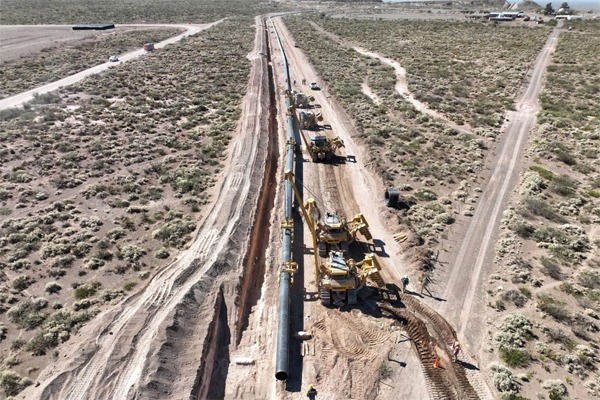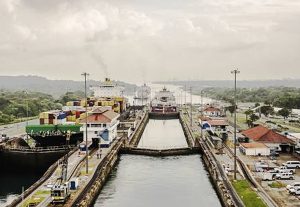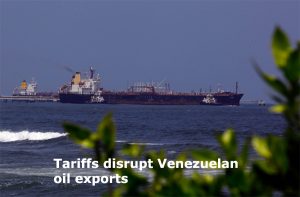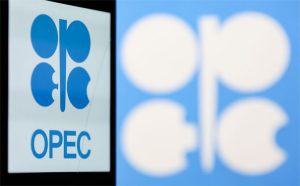Despite the changes, long-term projections for established firms remain positive

Santiago Escobar, Buenos Aires Herald
BUENOS AIRES
EnergiesNet.com 01 27 2025
In his inauguration speech, Donald Trump said his government intends to boost the United States’ oil and gas production and undo former President Joe Biden’s climate agenda. This would bring volatility to the global energy market and affect the finances of Argentine companies in the sector.
Trump has moved forward with restarting permits for liquefied natural gas (LNG) exports, which could intensify competition in key markets such as Europe and Asia. Argentina, which is just beginning to position itself as a strong player in the sector, may face difficulties competing against the U.S., which has more advanced infrastructure and lower production costs.
However, analysts are emphatic that an aggressive U.S. policy — while it would take time to translate into increased volumes — would add pressure to the oil and gas sector and could bring Brent crude closer to US$65 than US$70. Argentine oil is almost entirely sold for the next six months, which reduces exposure to significant corrections at the start of 2025.
“Drill, baby, Drill”
Ignacio Sniechowski, head of research at Grupo Invertir en Bolsa (IEB), told the Herald’s sister publication Ambito that the shift in U.S. energy policy toward greater exploitation and exports of fossil fuels could increase pressure on the global crude supply, which would impact international prices.
He pointed out that while consensus indicates a price for Brent between US$65 and US$70 per barrel, an aggressive U.S. policy could push values closer to the lower end of that range due to the potential increase in production. “This effect would be amplified by production increases in emerging countries, including Argentina, and lower cuts from OPEC+, while global demand is being revised downward due to slower growth in China,” Sniechowski said.
Matías Cattaruzzi, senior equity research analyst at Adcap Grupo Financiero, said that the beginning of Trump’s second term would dominate the geopolitical and economic landscape. “He will seek to reconfigure energy markets in a fragmented world order. His strategy will prioritize U.S. energy dominance and the use of oil and gas as geopolitical tools,” Cattaruzzi said.
Regarding his domestic energy policy, Trump aims for deregulation and reversal of climate initiatives from the previous administration, which opens the possibility of allowing the continued operation of fossil fuel-generating plants so that they “do not cease their operations prematurely.” Additionally, he seeks to expand LNG export capacity and provide incentives for growth in the upstream sector despite challenges such as high service costs, which “could generate downward pressure on prices,” Cattaruzzi said, echoing Sniechowski’s views.
The geopolitical landscape: considerations for investors
Cattaruzzi also warns that geopolitical factors could influence crude prices. Intensified sanctions on hydrocarbon exports from Russia and Iran “could restrict supply and exert upward pressure on prices.” At the same time, using energy exports as a diplomatic tool, particularly in competition with Russian gas toward Europe, could create tensions between the U.S. and the European Union.
The possibility of the White House imposing a 25% tariff on Canadian goods, including crude oil, which has an estimated probability of 40%, would have implications for bilateral trade.
“On the other hand, withdrawing from multilateral commitments on climate change adds downward pressure to the market and complicates global efforts led by the United Nations Conferences of the Parties (COP) to combat climate change. These dynamics highlight the complex interaction between energy policy and global markets,” the strategist warns.
U.S. energy emergency: implications for Argentine companies
Mariano Ricciardi, chief executive of BDI Consulting, thinks the market is awaiting the 100 decrees Trump announced for his first day in office, particularly regarding energy trade policies with Canada and the potential restrictions and tariffs that could influence oil prices “either upward or downward.” He suggests that, in a scenario of falling oil prices, “companies operating in Vaca Muerta could be affected differently depending on their size and financial structure.”
Large companies with operations in Vaca Muerta have strong financial backing to face potential headwinds — but smaller companies “have more vulnerable financial structures,” Ricciardi said, deepened by having issued debt in recent months through negotiable obligations (ONs). A strong headwind could thus leave them near default.
Ricciardi says that these “smaller” companies would undoubtedly face more significant financial stress if a drop in oil prices is prolonged. However, if the decline is temporary and does not exceed six months, “it is unlikely to significantly affect the long-term projects that characterize this industry.”
Impact on stock prices
Sniechowski believes Vista Energy (VIST) is more sensitive to fluctuations in international prices than YPF (YPFD) because it is a company focused solely on the upstream segment, while YPF is an integrated company that can offset lower upstream margins with its midstream and downstream operations.
Regarding Pampa Energía (PAMP), Sniechowski points out that the current impact of changes in crude prices is limited, “as its oil production is minimal compared to its focus on gas, energy generation, and other businesses.” However, starting in 2026, its shale oil production in Rincón de Aranda could gain relevance.
A significant increase in crude supply would harm the Argentine oil and gas sector, forcing companies to increase volumes and optimize costs. It is crucial to “enhance transportation capacity for production, despite the inherent complexities of this challenge,” Sniechowski concludes.
The outlook for Argentine companies
Cattaruzzi emphasizes that in the short term, “no significant impact is expected for Argentina or its exporting companies,” as increasing production significantly and rapidly, as Trump aims to do, is “complicated.”
“Uncertainty generates volatility for exporting firms. However, investors can mitigate the effects by diversifying into companies with more stable revenues, such as Pampa Energía, focused on regulated gas, or YPF, which has integrated refining and fuel sales operations. These activities act as a buffer against international fluctuations,” he says.
In the long term, there could be slight downward pressure on oil prices, but YPF and Vista Energy maintain solid growth prospects. “A 38% increase in Vista’s total production is projected for 2025, and a 34% increase in shale crude production for YPF. Additionally, a reduction in country risk could boost the value of their shares,” Cattaruzzi said.
Given these circumstances, and despite the potential downward pressure from U.S. energy policy and some geopolitical factors, projections for major Argentine companies in the oil and gas sector remain positive. Although the drop in oil prices could create volatility in the short term, the more established companies in the industry are well-positioned to navigate this scenario thanks to their revenue diversification and strong growth prospects.
buenosairesherald.com 01 24 2025












